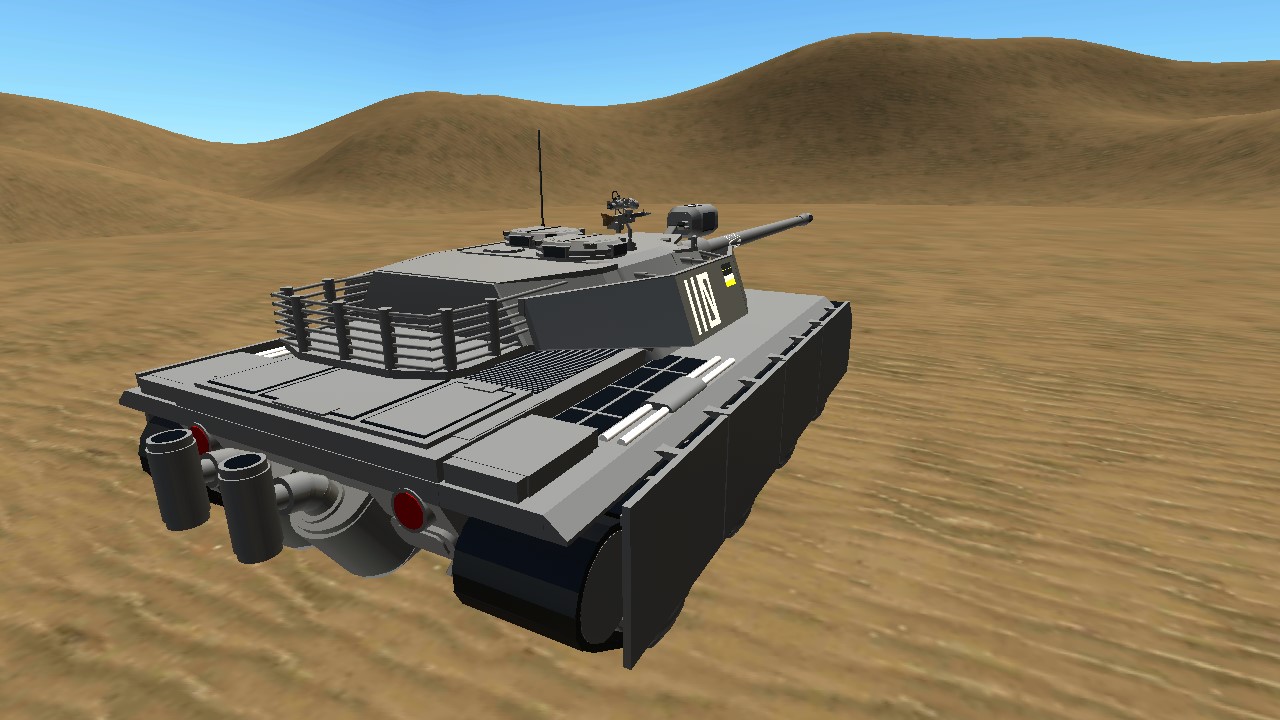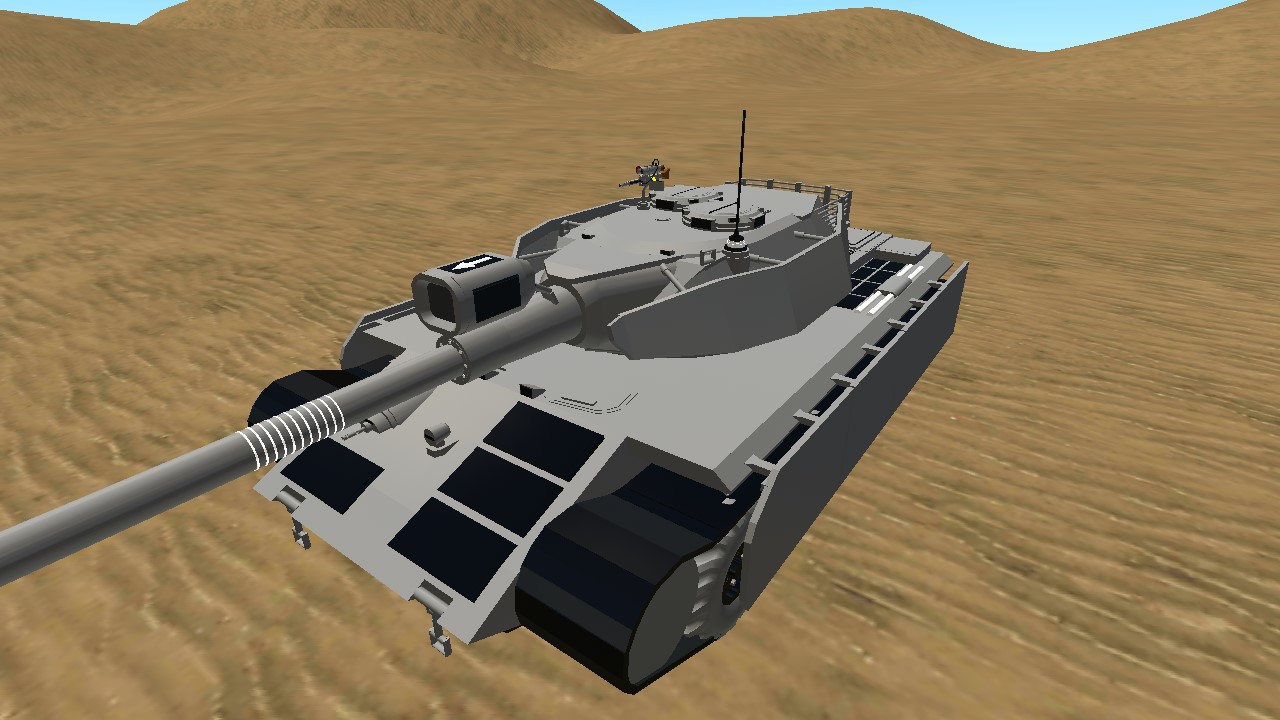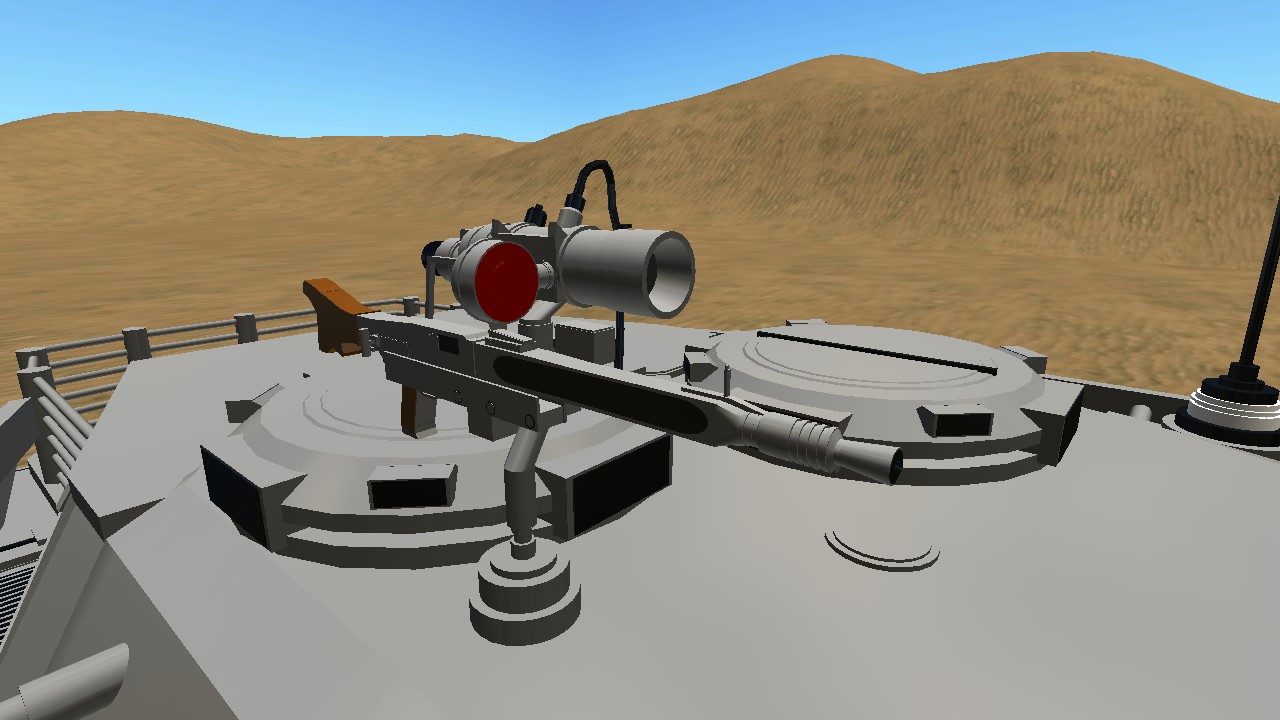Controls
AG1, Pitch, Roll - Engine Start + Vehicle Controls
AG2, VTOL, Roll - Gun Elevation + Turret Rotation
AG3, Pitch, Roll, Fire Guns - MG42 control
Short Story -
The Fate of LT-44 no.110 "Helena" - 22nd Armoured Battalion "Jagdhund"
27 November, 2017, a Caterpillar 349F L Excavator pulled an abandoned tank from its watery prison several feet under the bottom of a river near *Warsaw, Poland. *
The Belkan-built LT-44 tank had been resting at the bottom of the river for 71 years. According to its specifications, it’s a 35-tonne machine with a top speed of 90km/h (60mph)
From February 1946 to December 1948, heavy battles were fought in the massive Warsaw front by Belkan and Soviet forces. Over 270,000 men were killed and 600,000 men were wounded there.
During battles in the summer of 1947, the tank fought heavy Soviet armor (Particularly the IS-series, T-34/85s and several prototypes of the T-54/55 which were pressed into combat to have it's effectiveness tested), eventually scoring itself eleven tank kills and 170 infantry under the command of Capt. Friedrich Schultz.
On August 1947, Belkan troops began an advance along the Vistula river. It was said that the tank accidentally fell into the river during the advance due to the weather conditions making the visibility limited.. Fortunately, then-Capt. Schultz and his crew escaped from the rapidly sinking tank relatively unharmed. However, due to the speed of the advance, this meant that Helena had to be abandoned and the forces then pushed on.
Decades later, a local man walking by the river (Andrzej Nowak) noticed tank tracks leading into the river, but not coming out anywhere. For several months he saw air bubbles emerging from the river. This gave him reason to believe that there must be an armoured vehicle at the river's bottom.
And so, Mr. Nowak then told several of his co-workers which happened to be retired Belkan Marines, which in turn, told their comrades at the Military about the tank.
The story then circulated around the Armed Forces like wildfire which led to Belkan Army High Command issuing a recovery order for the vehicle.
Belkan Marine Divers then initiated diving expeditions to the bottom of the lake. At the depth of 13 metres they discovered the tank resting under a 7-metre layer of peat.
The pulling operation began at 03:30 and was concluded at 12:00, without any technical breaks.
The weight of the tank, combined with the travel incline, made a pulling operation that required significant power. The excavator then handled the operation with efficiency.
The weight of the fully armed tank was around 35 tons, so the tractive force required to retrieve it was similar. A main requirement for the excavator was to have enough weight to prevent shoe-slip while moving up the hill.
After the tank surfaced, it turned out to be the very same tank that had been a thorn to the side of the Red Army in the course of the battle at Warsaw several weeks before it sunk in the river. Altogether, 8 shells and 3,750 rounds of 7.92 Mauser were found on board with an extremely rare IR system still mounted with it's MG42.
Remarkably, the tank was in good condition, with no rust, and all systems (with the engine having to be thoroughly drained and it's system bled out in order to function) in working condition.
After recovery operations, it was then examined thoroughly and was confirmed to be the very same one that destroyed Soviet Armor with ferocity.
Several months after, it underwent a major restoration at the Ritterstaadt War Museum, having most of it's parts retained and the tank itself repainted.
The now aged Maj. Schultz and the crew of Helena then visited her several weeks after it's restoration was completed.. Now reunited with their tank..
It currently resides in the Ritterstaadt War Museum along with a variety of tanks from different eras.
The LT-44 was a Belkan light tank deployed during the revolution of the Belkan Federation and the Federal Republic of Auruna against the Soviet government from mid-1946 to its end in 1948.
It had the ordnance inventory designation of Sd.Kfz. 188. It was later designated as the Leichter Panzer Modell-1944 Ozelot. It was referred to as Type 44 by British and Paternian units who've fought alongside it, and Sobaka satany (Satan's dog) by Soviet units, attributed by it's frightening speed and firepower.
The Ozelot was intended to counter the Soviet T-34, though, was later made to take down T-44s, the IS series and later, the T-54 and to replace the aging Panzer III, Panzer IV and LT-43. Nevertheless, it served alongside the Panzer IV and the heavier Pz. VI C until the end of the war. It is considered one of the best tanks of the revolution for its excellent firepower and protection.
Type - Light tank
Place of origin - Belkan Federation
Service history -
In service
1946–1970 (Belkan Federation)
1946 - 19?? (Federal Republic of Auruna)
Used by - Belkan Federation
Federal Republic of Auruna
Wars - Belkan and Aurun Revolution
1950s Border Skirmishes vs. Soviets
Production history
Designer - Nirvash Research Corp.
Designed - 1945
Manufacturer - NRC
Unit cost - 28,000 BRD (Without weapons, optics, or radio)
32,000 BRD (combat ready)
Produced - 1946–1954
No. built - About 7,300
Variants - Ausf. A - K, Befehlspanzer (command tank), Beobachtungspanzer (artillery observer vehicle), Bergepanther (armoured recovery vehicle)
Specifications
Weight - 35.1 tonnes (34.5 long tons; 38.6 short tons)
Length - 11.0 metres (36 ft 2 in) gun forward
Width - 3.71 m (12 ft 2 in)
Height - 2.89 m (9 ft 5 in)
Crew - 4 (driver, commander, gunner, loader)
Armour - up to 122 mm (sloped at 30-70°)
Main armament
1 × 8,8cm KwK 88M L/62 with 110rds or
1 × 10,5cm Pak 46 L/68 with 84rds or
1 × 12,8cm Pak 44 L/75 with 70rds
Secondary armament
2 × 7.92 mm MG 42 machine guns
with 7,500 rounds
Engine - Nirvash VSE-10 10cyl. Water-cooled Petrol engine
800 PS (790 hp, 588 kW)
Suspension - double torsion bar, interleaved road wheels
Fuel capacity - 850 litres (186 imp gal; 224 US gal)
Operational range
Road: 370 km (230 mi)
Cross-country: 160 km (100 mi)
Speed - 90km/h (60 mph)
Specifications
Spotlights
- bjac0 7.3 years ago
- ColonelStriker 7.3 years ago
General Characteristics
- Successors 1 airplane(s)
- Created On Android
- Wingspan 12.2ft (3.7m)
- Length 36.2ft (11.0m)
- Height 9.5ft (2.9m)
- Empty Weight 24,580lbs (11,149kg)
- Loaded Weight 26,911lbs (12,206kg)
Performance
- Wing Loading 40,002.4lbs/ft2 (195,308.9kg/m2)
- Wing Area 0.7ft2 (0.1m2)
- Drag Points 7185
Parts
- Number of Parts 888
- Control Surfaces 0
- Performance Cost 2,522







Long ago... Just like the hearse you die to get in again... Sorry
@bjac0 Ayy lmao
this made me very hard
Imma make discroption like dis too xd
Nice
Protip: use high quality reflections for better screenshots
I like the part number